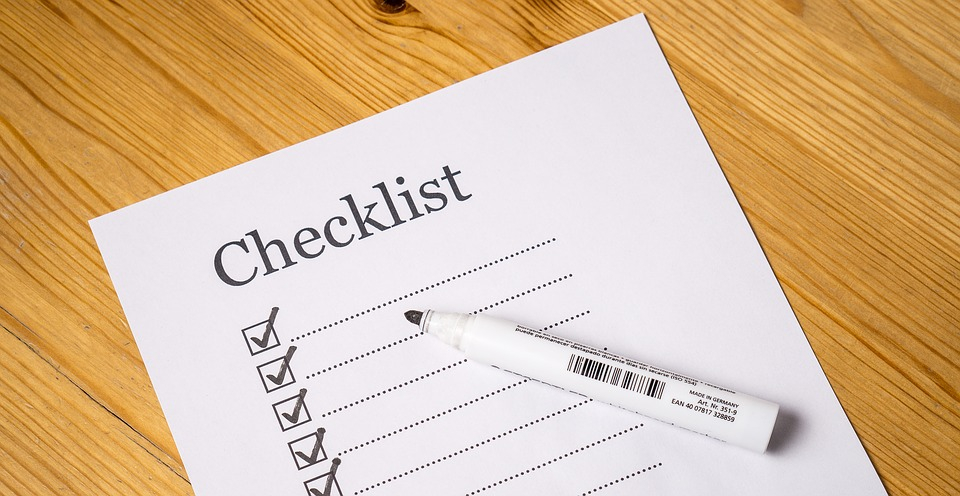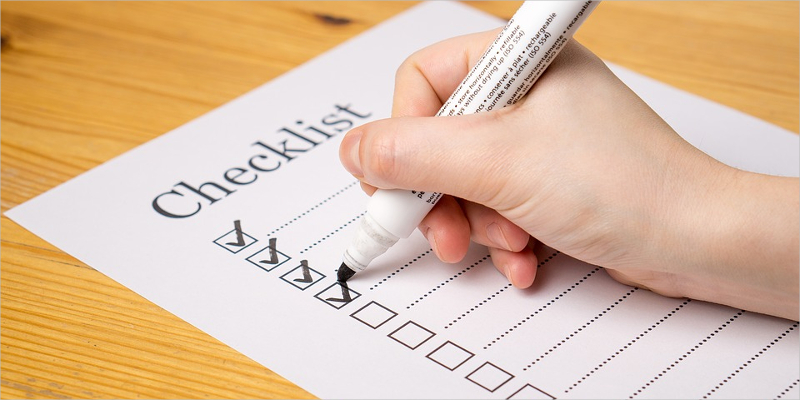How to Create a Checklist that Actually Works?
At some point of your life, you might have made a lot of mistakes at work that made you inefficient to do any task correctly and orderly. The next thing you do, you were already browsing on the internet on how to get your life together once and for all. You probably came across a number of checklists examples and the possibility that it might help and work for you. You thought “why not start making one?“, and then another dilemma dawned into you: you don’t know how checklists work. But like every problem, there is always a solution.

What Are Checklists?
A checklist is a type of a process documentation and an informational job aid that usually outlines and highlights the specific details of certain standardized processes. It is impossible for you, or for anyone, to remember a lot of things but with the use of a checklist, the limited potential of our brain’s memory can be compensated. Checklists are often used as a guide in order to make sure that every step of the process is done correctly and orderly
Checklists are used by many different profession for various reasons. Businessmen use it in their daily operations. Doctors use it to prevent failures during surgeries. Pilots use it to make sure every procedure when flying a plane is done. Instructors use it as a teaching aid that ensures students won’t get an information overload. Businessmen use it in their daily operations.
What Are the Benefits of Having a Checklist?
Checklists keep you from missing any step of the process. Checklists make sure you won’t commit the same mistake for more than once. It is useful for new employees who are still being trained. Some training mostly lasts less than a month and not everyone can digest a lot of information at that short span of time. A checklist can be of great help since it would guide them in doing standard tasks and it will also be of advantage to the trainers because it would decrease the times the trainee would be asking questions. Aside from this, it would also reduce risky situations wherein a step is forgotten and then there will be a domino effect phenomenon that will destroy any further of the process.
Checklists keep you productive. Checklist saves brainpower, effort, energy, and time that would keep you productive. A checklist can be used as a guide in doing standard tasks until time will come that you can finally master every step. There is no way you can learn things in a short span of time unless you’re extremely gifted with memory. A checklist can be used as a reminder of that one procedure you usually forget how it’s done. You simply just can’t ask your trainer every time you forgot one procedure because they, too, have other important things to do. A checklist can be Instead of staring blankly into space for a long time in trying to figure out the next thing to do, you can save time by just jotting down the procedures.
Checklists keep you efficient. You have to admit that more often than not, there are some steps you would intentionally skip only because you find it unnecessary. News flash: in standard tasks nothing is unnecessary—every step is important. Just imagine a patient getting another complication just because the nurse did not clean or wash his wound at the start of doing the first aid. Unorganized workplace wears you down and it does nothing to help you with your tasks. Even if you try organizing your desktop, you would also not know where to start doing so. Checklists give you a path to follow whenever you start to get overwhelmed with all the things that you are ought to do. Now that you have a way of organizing things, the next thing you should deal with is the order of the things that need to be done. Checklists let you put tasks in order so you can accomplish the most important things first.
A Checklist on How to Start Making a Checklist
Point 1: Know why you need one
You could be tired of making the same mistakes or you just keep on forgetting the important stuff. What’s important is you know what your purpose is on making a checklist.
Point 2: Identify what needs to be identified first before starting on anything
Identify procedures you usually mess up, forget about, or intentionally skip since you always thought it’s unimportant. You can also write the details of every step or how every step is done.
Point 3: “Go big or go home” does not always work
Don’t be afraid to start from small steps. Going big on the first try will put you at risk more than keeping things small. If you start on making long checklists, chances are, it will just wear you down resulting to doing little to no tasks at all.
Point 4: Have a system
Create a system with your checklist by dividing it into sections, adding headings and subheadings, and adding even the smallest details on every point. You may also include writing down the parts where you would usually mess up so you would avoid committing the same mistakes again anytime soon.
Point 5: Own it and work on it
Owning your checklist helps you keep in mind that whether you follow it or not, you are held accountable. Even if you already know now how to create a checklist but you are not responsible enough to keep yourself working on improving your performance, your checklist won’t do you any good. Remember that it is not your checklist that would be doing the job for you but it’s you who should work out on your checklist and not the other way around.


